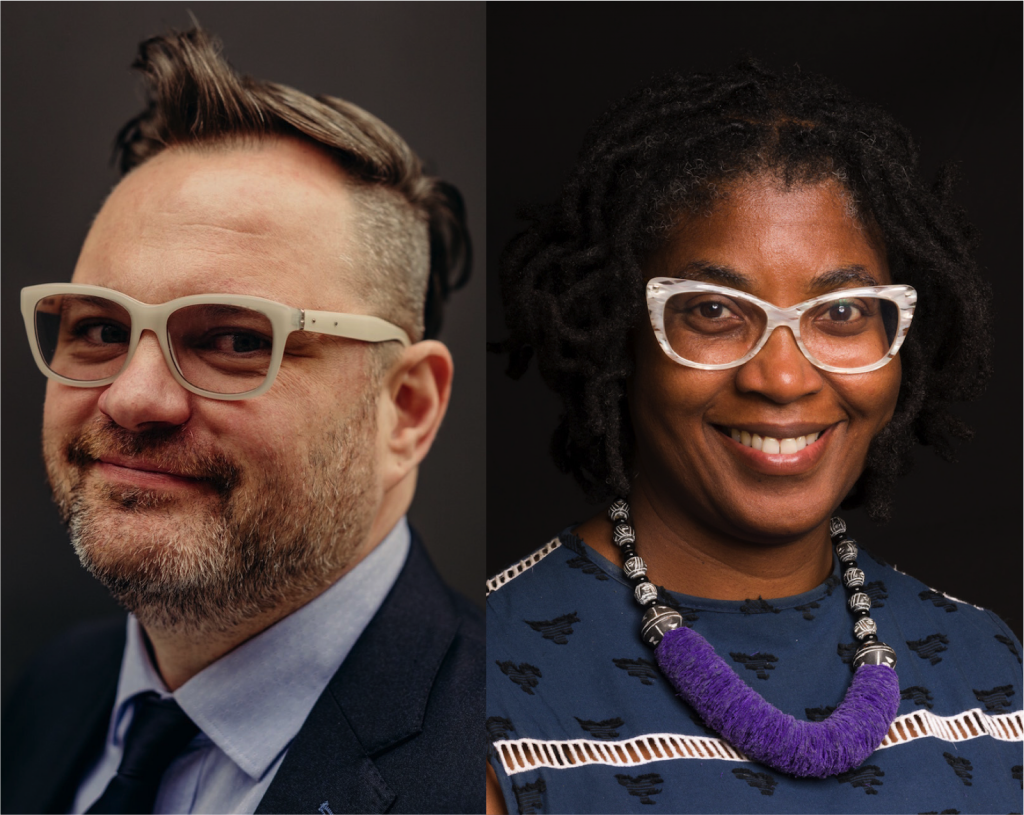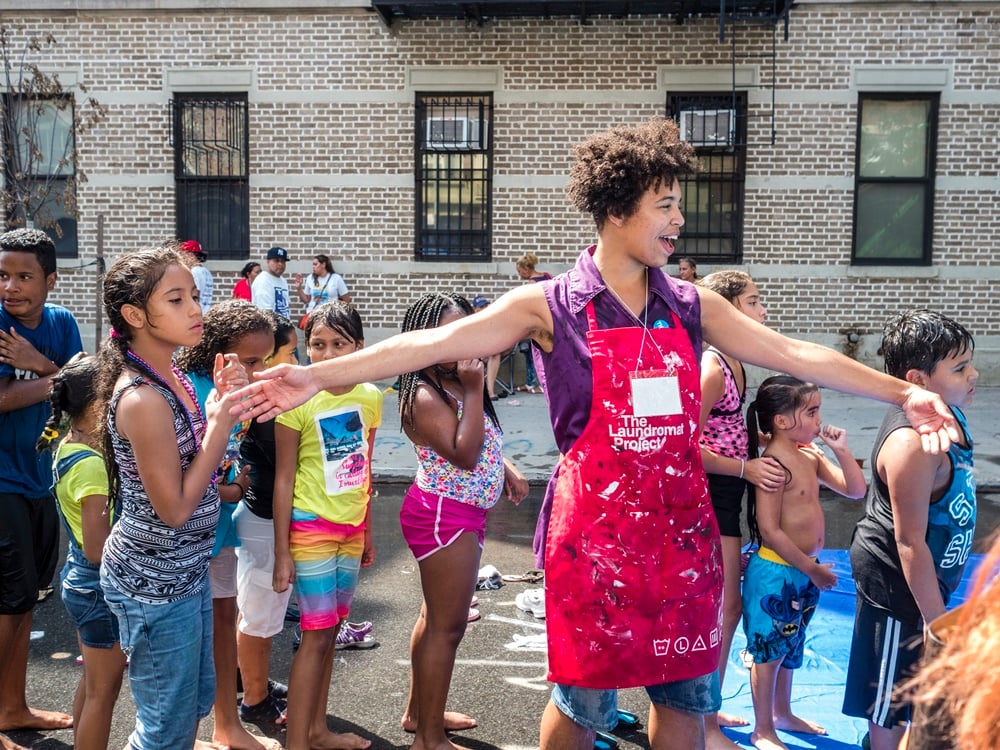Artnet Talks
New York Cultural Leaders Gonzalo Casals and Kemi Ilesanmi Compare Notes on the Threats—and Opportunities—of the Pandemic Era
We spoke with the two following their keynote address at the Art World Conference.

We spoke with the two following their keynote address at the Art World Conference.

by
Eileen Kinsella

If you want to know about the crucial role that the arts play across all five boroughs of New York City—and the urgent need to foreground culture amid the current health and economic crises—you have to speak with Gonzalo Casals and Kemi Ilesanmi.
Casals, a seasoned art-world veteran and the city’s culture commissioner, oversees the largest municipal funding body of culture in the country. Before that, he was the director of the Leslie Lohman Museum, which focuses on art by LGBTQ+ artists.
Ilesanmi, the executive director of the Laundromat Project, which supports artists as change agents in their communities, was previously at the Creative Capital Foundation and the Walker Art Center. In 2015, she was appointed by New York mayor Bill de Blasio to the city’s Cultural Affairs Advisory Commission.
This year, as the Laundromat Project celebrates its 15th anniversary, it also realized a years-long dream: a new, permanent home in Bed-Stuy, Brooklyn, where it will settle after previously operating out of multiple locations across the city.
“We signed a 10-year lease. It gave us an incredible sense of grounding in a very destabilized time,” Ilesanmi tells Artnet News.

The Laundromat Project’s 2017 Kelly Street Block Party. Photo: Osjua Newton. Ccourtesy of The Laundromat Project.
Casals and Ilesanmi gave the final keynote of the recent Art World Conference, in which they delved into the topic of government support of the arts at a time when public funding has arguably never been more needed.
Artnet News hosted a follow-up discussion, in which we asked the pair to comment on the past few months of lockdown, what they experienced, and how their respective organizations coped.
What have the last few months been like for you and your organizations?
Kemi Ilesanmi: The past few months have been a reckoning on so many levels for art, cultural workers, and just the whole system. As a community-based arts organization, for us, the last few months have been about getting closer to our sense of purpose and reminding ourselves of the importance of putting people first. That meant showing up for our staff and supporting them through this unprecedented time.
Early on, in April, we formed a Creative Action Fund, a micro-fund for artists. We depend on and need artists in our most challenging moments, and we want to actually show up for them. Through the fund, we were able to support 27 artists across 22 projects, some of which were collaborative.
One artist [Zain Alam] made a beautiful concert for the last day of Ramadan, and Ann Bennett’s Juneteenth project discussed the Black image through digital archives and collections that are accessible to the public. Other projects focused on meditation and self-care—it was really an incredible range.
Gonzalo Casals: My appointment was announced a few days before the shutdown. Part of the work that the agency was doing before I came in, that we continued to do, is understanding the impact of the pandemic and the economic crisis that came after.
We did a survey and a report that we used to inform our priorities, but also to help cultural organizations to advocate for both private philanthropy and [for funds from] the federal government.
We had multiple conversations with different areas of the sector. At the same time, [we are looking to find] a longer plan for how we continue to recover. Because it’s not only about the cost of cultural organizations; it’s about how cultural organizations can be part of the recovery of the city.
At a time when many organizations are losing money, people are pointing at who isn’t paying up, whether it’s board members or the government. Meanwhile, we’ve seen a lot of artists open up their wallets and offer artwork to help fund small arts organizations. Do you see that as a hopeful or a troubling sign, and how might it change the way the arts are funded in the future?
GC: In many ways, it’s an example of over 100 years of public–private partnerships in which government corporations and private philanthropy support the field together. In addition to the incredible diversity of ethnicity, backgrounds, and locations that artists bring to the table, one of the things that makes our sector so vibrant is the incredible diversity of who supports our field.
The Laundromat Project is a perfect example. When we talk about donors, we’re talking about normal people and a people-powered campaign. We’re all coming out and helping each other.
KI: One hundred percent. The Laundromat Project has a community of artists and we checked in with them before we decided to do this people-powered campaign, where we asked people to raise money on our behalf. We’re sensitive to the fact that many have lost jobs and have been economically affected. So we reached out to ask, how can we do this? How should we phrase it?
And what they said was: “This is something good happening in the world, and an organization we want to support.” Maybe people won’t be able to show up in the same way they have in the past, so we asked people to amplify the campaign, even if they couldn’t give to it. But that sense of mutual aid, of investment in culture, certainly came from our artists. And it also came from so many other folks that we’ve been communicating with.
I think of it as being a green shoot in the midst of all this muck that we’re in at the moment. People want to support that green shoot and want it to grow and thrive. That has overwhelmingly been the message over the past few months. We’ve had funders reach out. We’ve had artists of their own accord say, “We want to raise money for you.” We had a belly dancer, I think, in Washington State, say, “I like what you’re doing and I’m going to have some [virtual] classes, and you can have some money from all the classes I do.”
GC: It’s also a reckoning with racial injustice in our country. There are some problems that cannot just be solved with money, and I think it’s important to highlight that. It’s important for each of us to acknowledge our privilege and how we understand that we’re part of a system that needs to change. And there’s a window of opportunity for us to change.
KI: I think we see that happening with so many of our peer organizations and communities. What I just described to you was our story, but we’re also hearing from a number of other organizations and communities about stepping up and wanting to make sure that they make it through this time.
Is this a blueprint of sorts for how to move forward?
GC: In general, artists have always been the ones that try to make sense of all the changes that are happening around us. In their creativity and unique ways, they try to help society figure out a resolution. And they also hold us to our word, hold us accountable about what we are trying to do as a society. And that’s for sure a kind of a blueprint. It’s important to remember that [arts] remain a high priority. Sometimes we take it for granted because we’re so in it.
KI: I absolutely agree with Gonzalo. The arts are such an incredible part of life, particularly for New Yorkers, and that’s something we have lived, as an organization, for the past 15 years. I think this moment is such an opportunity to look, with a level of priority, at where our pain points are, as well as where the opportunities are to make a different world. Because the pre-COVID world isn’t ever going to come back in exactly that way, and there is so much that wasn’t working.